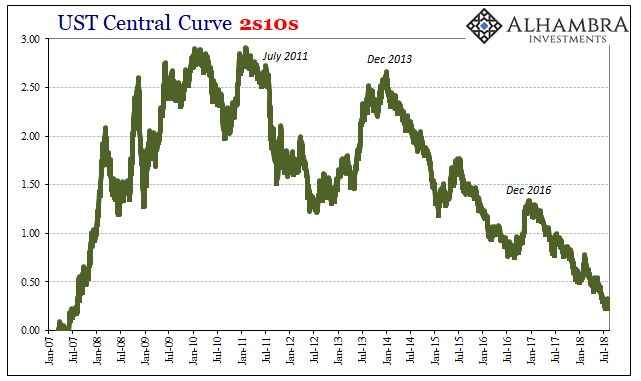The FOMC statement for the July-August 2018 policy meeting exceeded expectations once more. It’s difficult for the Committee to continually do this since the whole point of these things is to downplay all expectations. The goal is to make everything seem boring and uninteresting if the Federal Reserve is doing its job.
But they are always interesting because nothing over the last decade has gone to plan. Not one thing. Even now, the economy is supposed to be booming (“strong” in the updated official language) which should be as uncontroversial as any characterization since maybe the 1990’s. And yet.
These policy statements are taking on that familiar air of uncertainty again. There’s now talk about overseas things, though unlike 2015-16 they aren’t as nonspecific as “overseas turmoil.” Trade wars have entered the official guidelines in a way that Jerome Powell wishes they hadn’t. There is always uncertainty at any given time, but the constant intrusion of big things is beyond the usual noise.
We know it is big, this something, by what the FOMC spends its time talking about – and writing down in its official statements. The words “yield” and “curve” particularly together have notably become a regular feature.
When the yield curve was last at its steepest, for this reflation cycle anyway, it was hardly noticed. The 2s10s jumped to their highest on December 21, 2016. That was amidst the full weight of Reflation #3, and so we would expect the curve to simultaneously move higher nominally while also steepening in the process (as had happened during Reflation #2 in the middle of 2013). No need, really, to talk about it when it’s doing what it’s supposed to.
But it never really got all that far to begin with. Even at that moment in 2016, it was still a shriveled husk.

Since then, the yield curve has been pressured by competing views. The short end moves with “rate hikes” not because investors might agree with the FOMC’s reasons behind them, but because the FOMC offers monetary alternatives where they pay interest set for non-economic reasons. The long end, though up nominally from the lows in 2016, remains conspicuously stifled despite all that.









Leave A Comment